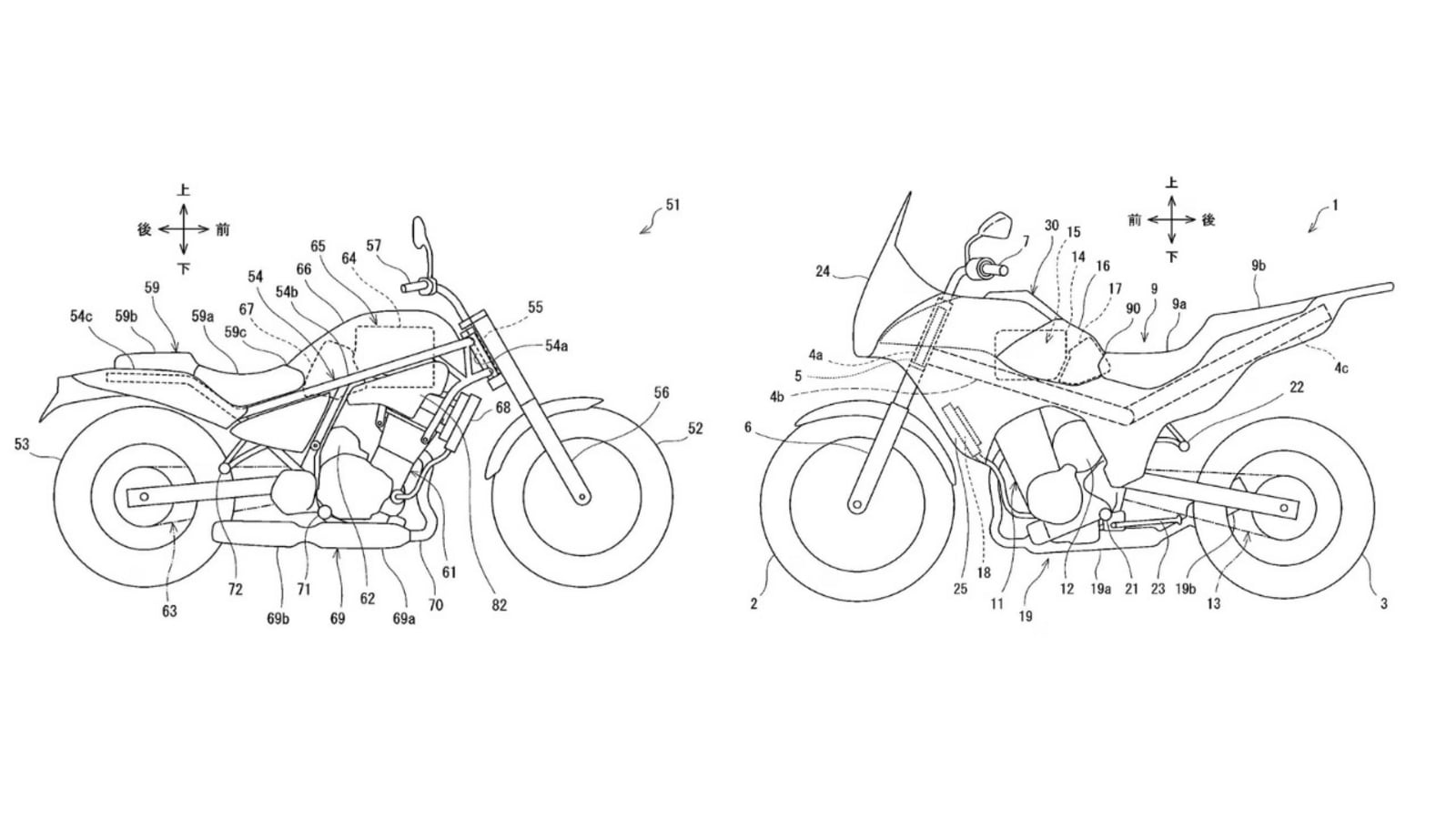Kawasaki is expanding its hybrid motorcycle technology to include the Versys and Eliminator models, according to new patent filings. This move follows
…
Kawasaki is set to expand its hybrid motorcycle technology beyond the Ninja 7 and Z7 models. Recent patent filings revealed by Cycleworld showcase that the Japanese bike maker is working on hybrid versions of its Versys and Eliminator models, aiming to bring advanced hybrid technology to a broader range of bikes.
One of the biggest challenges in developing hybrid two-wheelers is fitting the combination of an internal combustion engine (ICE), electric motor, fuel tank, and battery pack into a sleek motorcycle frame. Kawasaki has tackled this issue in the Ninja 7 Hybrid and Z7 Hybrid by placing the hybrid battery and related electronics in a box underneath the rider’s seat. This design allows for a conventional fuel tank and airbox above the engine, while the electric motor, which drives the bike in hybrid and all-electric modes, is mounted above the transmission.
According to new patent images, Kawasaki’s solution for the Versys and Eliminator hybrids involves moving the battery above the engine. This design choice frees up space under the seat, allowing for a more traditional design, which is particularly important for the low-slung cruiser look of the Eliminator. The Versys will also benefit from this arrangement, gaining increased clearance for its long-travel suspension.
Also Read : Kawasaki Ninja ZX-4RR launched in India, priced at ₹9.10 lakh
The patent filings further reveal that the Eliminator hybrid will feature two fuel tanks on either side of the battery pack, providing a wider stance and a low centre of gravity. Meanwhile, the Versys hybrid will utilise a single, wider fuel tank that wraps over the battery, maintaining a streamlined design.
While the exact mechanical specifications of these upcoming bikes are unknown, the patents indicate that Kawasaki plans to use the same 451cc parallel-twin engine, assisted by an electric motor mounted above the gearbox, as seen in the Ninja 7 and Z7 Hybrid models.
The “7” in the model names represents the equivalent performance delivered by the hybrid powertrain, which Kawasaki claims is comparable to a 700cc bike. By democratising its hybrid system across multiple models, Kawasaki aims to amortise its R&D costs and potentially bring more hybrid models to market in the future.
First Published Date: 03 Jun 2024, 06:29 AM IST

